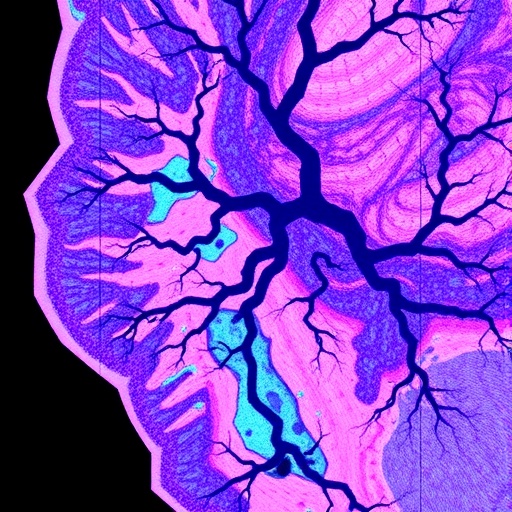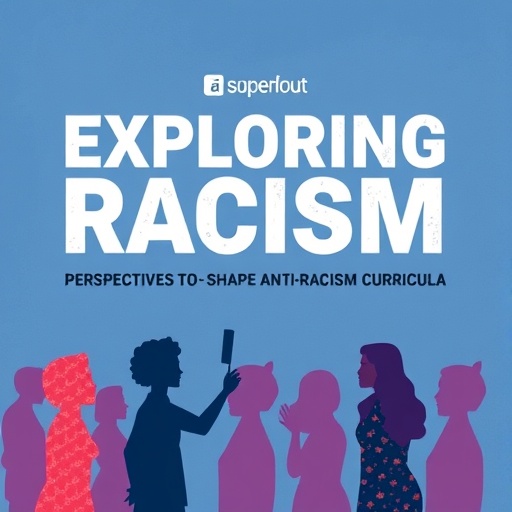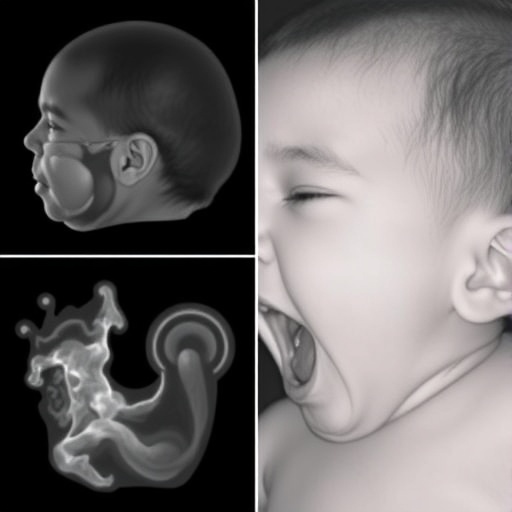In the evolving landscape of cancer biology, histological transformation represents a formidable challenge that continues to intrigue and perplex researchers. Despite notable advances over recent years in elucidating the promoters, effectors, and potential therapeutic strategies targeting such transformations, a substantial gap remains in our understanding. Foremost among the unresolved questions is the identification of reliable molecular biomarkers that can predict the propensity of lung adenocarcinoma to transform into a squamous cell carcinoma phenotype. Current data do not yet clearly define whether specific genetic or epigenetic events act as deterministic factors that favor transdifferentiation into a squamous-like state as opposed to a neuroendocrine (NE) lineage, underscoring the complexity of cellular plasticity and lineage commitment in tumor evolution.
Large-scale accrual of genetically annotated patient samples remains an essential but logistically daunting necessity for advancing this area of research. Institutional trials yield invaluable data, yet consolidating extensive cohorts with comprehensive molecular annotation capable of powering robust biomarker discovery faces considerable barriers. Preclinical models serve a critical role in validating therapeutic candidates aimed at preventing or treating these transformation events. However, the scarcity of human and murine models faithfully recapitulating squamous transformation curtails progress, impeding translational efforts that are vital to bridging molecular insights with clinical application.
Molecular discrepancies distinguishing de novo tumors from those undergoing histological transformation further complicate therapeutic approaches. Evidence indicates that transformed tumors, whether through NE or squamous routes, often retain broad molecular hallmarks of their antecedent adenocarcinoma state, albeit with enhanced heterogeneity. This molecular complexity challenges the notion that transformed tumors mirror their de novo counterparts, suggesting they may constitute distinct biological entities with differential therapeutic vulnerabilities. For instance, transformed small cell lung cancers (SCLC) have demonstrated a trend toward poorer chemotherapy responsiveness relative to their de novo equivalents, with progression-free survival metrics revealing a subtle yet clinically relevant disadvantage that demands further validation.
A nuanced example arises in the context of epidermal growth factor receptor (EGFR)-mutant lung adenocarcinomas, where NE transformation is associated with a noted loss of EGFR expression. Whether analogous downregulation occurs during squamous transformation, or in tumors harboring oncogenic drivers besides EGFR, remains unresolved. The mechanistic underpinnings governing the fate of such driver oncogenes during histological shifts remain a critical area of investigation, holding the potential to inform the development of adaptive therapeutic regimens tailored to dynamically evolving tumor states.
Intriguingly, the tumor microenvironment (TME) emerges as a pivotal but poorly understood player in histological transformation. In vitro studies, leveraging adenocarcinoma cell lines and organoid platforms, reveal minor upregulation of NE or squamous markers upon molecular manipulation. Yet, the full manifestation of transformation phenotypes predominantly occurs within the intricate in vivo milieu, implicating TME-derived signals as essential co-factors in lineage reprogramming. Clinical specimens undergoing such transitions exhibit repression of immune response pathways, hinting that substantial suppression of anti-tumor immunity might be a prerequisite for successful histological conversion. This immune evasion may be a strategy deployed by tumor cells undergoing epigenetic reprogramming toward a stem-like, plastic state, which is otherwise recognized as highly immunogenic. Understanding how tumor cells orchestrate immune suppression during these transitions could unveil novel immunotherapeutic interventions.
A striking question pertains to the directionality of histological transformation. Is it a unidirectional trajectory from adenocarcinoma to an alternative histologic state, or does plasticity allow for reversibility? Studies in NE SCLC suggest that MAPK pathway induction—counterpart to receptor tyrosine kinase signaling—can trigger cell cycle arrest and senescence, indicating an incompatibility between NE phenotype maintenance and MAPK activation. Such findings imply that re-expression of drivers like EGFR might be difficult to achieve once a NE state is established, posing profound implications for the timing and targeting of therapeutic interventions. Moreover, the recognition of transcriptomic heterogeneity and plasticity within SCLC subtypes, including non-NE states characterized by epithelial-mesenchymal transition (EMT) and Notch pathway activation, underscores the dynamic nature of histological phenotypes and their potential reversibility through epigenomic modulation.
Pharmacologic inhibition of epigenetic modulators such as EZH2 and LSD1, implicated in the extensive chromatin remodeling accompanying histological transformation, has been shown to induce shifts from NE to non-NE phenotypes. Such evidence supports the concept that certain transformed states are malleable and potentially subject to therapeutic reprogramming. However, whether these manipulations can fully restore the original adenocarcinoma phenotype or represent partial phenotype resets remains an open and fascinating avenue for exploration with significant therapeutic ramifications.
The clinical and biological landscape becomes even more complex when considering tumors exhibiting combined histology, such as adenosquamous carcinomas, which constitute a modest but notable fraction of lung cancers. These combined tumors might represent either intermediate transformation states in progress or a stable equilibrium in which cellular components with distinct histologies coexist. This equilibrium could provide selective advantages, potentially through cooperative cellular interactions that bolster oncogenicity and enable tumor progression. Such phenomena parallel observations in other cancer types, highlighting the multifaceted interplay of cellular phenotypes within the tumor ecosystem.
An overarching theme emerging from current studies is the conceptualization of tumor histology not as a fixed classification but as a spectrum reflective of underlying plasticity. Both the cellular origin and the repertoire of oncogenic drivers impinge on the phenotypic manifestations and subset of histological states a tumor can adopt. Nevertheless, selective pressures—including pharmacologic inhibitors targeting specific drivers—may disrupt these constraints, enabling transitions across histological states. This paradigm challenges the clinical reliance on microscopic morphology and immunohistochemical markers for histological subtyping, and emphasizes the necessity of more nuanced molecular diagnostics capable of capturing intermediate and transitioning phenotypes.
Recent proposals have coalesced into an “all-plastic” model of histology, positing an inherent tumor capacity to transit between phenotypic states, dictated by external stimuli such as treatment, hypoxia, and microenvironmental signals unless constrained irrevocably by specific genomic alterations. This framework may explain the presence of tumors exhibiting admixed histology or undifferentiated phenotypes, portraying cancer as a dynamic system of lineage flux rather than a static constellation of distinct entities.
Realizing the full potential of this plasticity model demands innovative methodological advances. Single-cell and spatial transcriptomics, alongside sophisticated lineage tracing techniques, are poised to revolutionize our capacity to dissect intratumoral heterogeneity and transformation directionality at unprecedented resolution. These cutting-edge technologies promise to decode the temporal and spatial choreography of histological transformations and to identify the molecular determinants driving such flexibility.
The clinical implications are profound, as appreciating histological transformation as a plastic, dynamic process compels reconsideration of therapeutic strategies. Treatments must adapt not only to the static genotype or phenotype prevailing at diagnosis but also to the evolving tumor landscape shaped by intrinsic plasticity and extrinsic selective pressures. This necessitates integrated, multidimensional molecular profiling over time and potentially combinatorial therapies targeting multiple pathways and the tumor’s adaptive mechanisms to outmaneuver transformation-driven resistance.
While the challenges are formidable, the ongoing elucidation of lineage plasticity and histological transformation heralds an era wherein precision oncology transcends conventional histopathological boundaries. By embracing tumor histology as a fluid spectrum modulated by genomic, epigenomic, and microenvironmental contexts, future therapeutic paradigms may effectively anticipate and counteract the protean nature of cancer.
In summary, histological transformation exemplifies the complex interplay of molecular, cellular, and microenvironmental factors that govern tumor evolution. Overcoming the barriers to understanding and manipulating this plasticity promises to redefine cancer diagnostics and therapeutics, offering hope for improved outcomes in lung and prostate cancers and beyond.
Subject of Research:
Lineage plasticity and histological transformation in lung and prostate cancers, focusing on molecular mechanisms, tumor microenvironment interactions, and clinical implications of tumor phenotype dynamics.
Article Title:
Lineage plasticity and histological transformation: tumor histology as a spectrum.
Article References:
Li, X., Gardner, E.E., Molina-Pinelo, S. et al. Lineage plasticity and histological transformation: tumor histology as a spectrum. Cell Res (2025). https://doi.org/10.1038/s41422-025-01180-x
Image Credits:
AI Generated
Tags: cellular plasticity in tumorschallenges in cancer research cohortsepigenetic events in cancergenetic factors in tumor evolutionlineage plasticity in cancerlung adenocarcinoma biomarkersmolecular biomarkers for cancer predictionneuroendocrine lineage in tumorspreclinical models for cancer researchsquamous cell carcinoma phenotypetherapeutic strategies for tumor transformationtumor histology transformation





